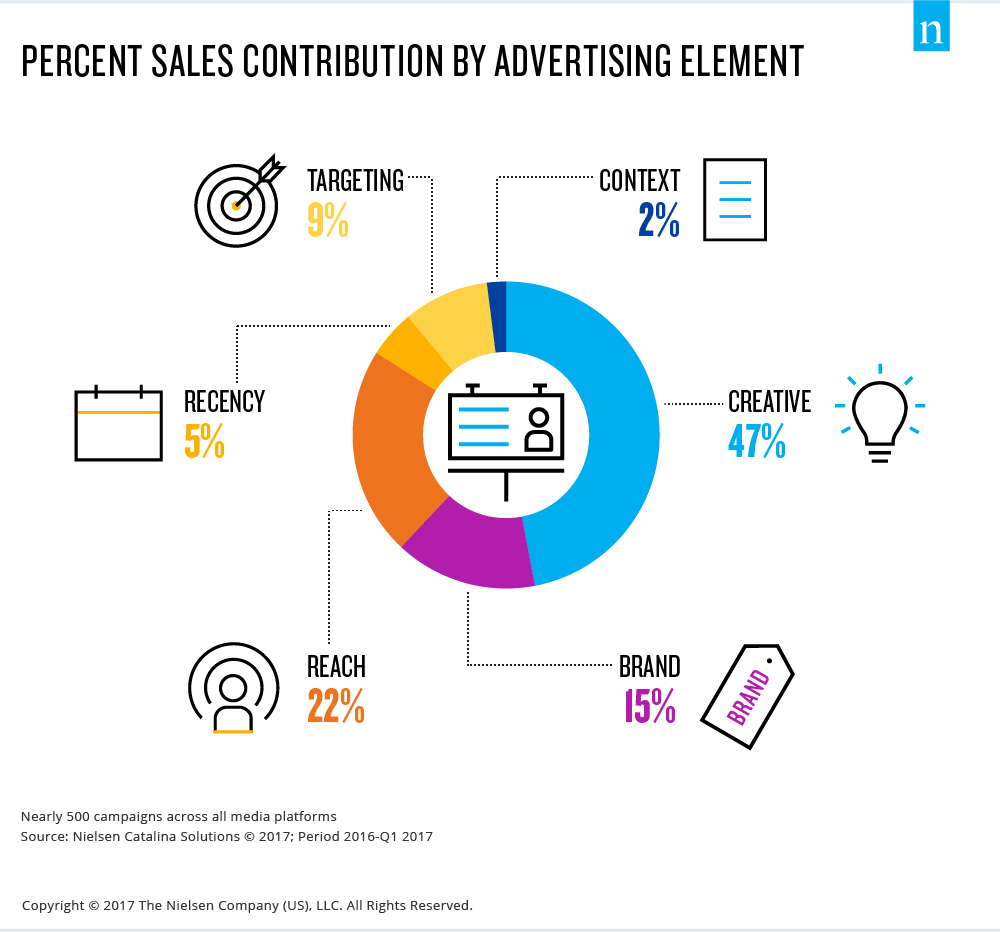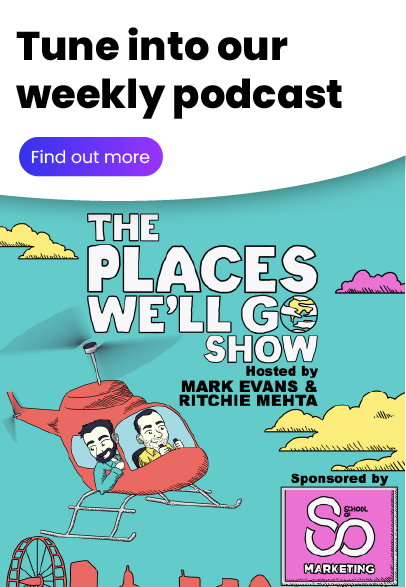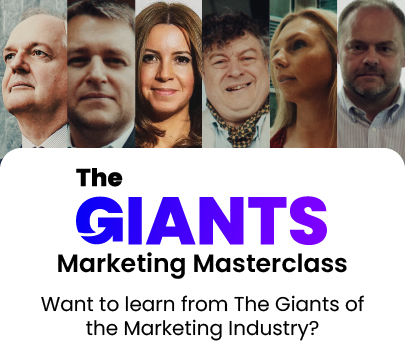There is certainly something magical about marketing. It’s a craft that has creativity at its very core. Bill Bernach once said that “creativity is the last unfair advantage we’re legally allowed to take over our competitors”.
This is because the power of creative advertising to transform business performance is actually well documented and understood.
Numerous studies show this to be the case, and that creativity contributes a disproportionate amount to business performance and perhaps is the single greatest element we have as marketers. For instance, data from Nielsen, which analysed 500 FMCG campaigns, shows the creative element is responsible for 47% of the sales uplift, ahead of reach at 22%, brand at 15% and targeting at 9%.

I would argue that ‘creativity’ is the single biggest gift and opportunity the entire marketing industry has given to you, in order to make your brands stand out and stand up above the crowd. Why you may ask? Well simply because we as an industry are terrible at it.
Now work with me here, take this case in point, on any given day we know that most people are exposed to around 2,000 adverts or communications. So lets consider that in our own lives. If I asked you to remember just one from yesterday, you’d probably struggle. But almost certainly if I asked you to remember 10 from yesterday you wouldn’t be able too. So if we take a room of 100 people that’s 100 ads remembered at best out of 200,000. That’s far, far less than even 1% of communications are remembered, let alone actioned.
Empirical evidence, shows us the same. Recent analysis conducted by Field, Nelson-Field and Bloom (2022) known as the attention-memory threshold, highlights that in order for an advert to be memorable there tends to be a certain attention threshold that needs to be met. This is that you need to hold a consumers attention to your advert for over 2.5 seconds in order to create a lasting impact on their ability to re-call your ad.

Interestingly, 85% of adverts they research did not achieve this, which highlights the same point I would making in my earlier example; most adverts are terribly poor at grabbing the attention of our audiences. Its neatly summed up by Bill Bernach when he said, “if your advertising goes unnoticed, everything else is academic”.
So what is your creative advertising here to do?
There are effectively 4 key elements to consider when it comes to effective communications and creative advertising.
1. Build memory structures
The first is that creative advertising enables you to influence how people remember things and changes the way their brains create associations which then become solidified in the mind. It makes a brand stand-out and come to mind first when someone has a need.
2. Build emotion connection
The second element is connected to the first, in that we know that what builds memory structures the most is when you are able to trigger an emotional connection. Its like the classic saying from Maya Angelo, “I’ve learned that people will forget what you said, people will forget what you did, but people will never forget how you made them feel”. It’s the same thing with advertising, people don’t forget how a brand made them feel.
3. Create stand-out so consumers take notice
The third aspect is absolutely paramount to what Dave Trott, advertising guru, calls ‘impact’ and this is that if no one sees your ad, no matter what emotion it triggers it will all be for nothing. So the need is to extend the reach of your creative advertising as far and as wide as possible to give yourself the greatest chance of having an impact.
4. Appear at the right time and in context
And then finally and only once all the other three elements are considered should you venture into the last bit. You can use targeted tools to help reinforce your communication at the right moment in order to get people to take action when they have a need.
















